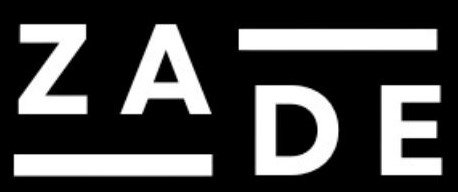Benefits of Digital Marketing
Zade Digital believes that Digital Marketing is one of the most powerful marketing tools for any company to use. And to prove our point, here are some of the benefits of using Digital Marketing.
1. The most measurable form of marketing
To ensure a marketing strategy is effective, we need to track its performance over time. Fortunately, the internet's focus on data and algorithms makes it straightforward to measure how well a strategy is working.
While measuring effectiveness can be challenging with traditional media, digital marketing offers a much simpler way to gauge how well a strategy is performing.
Digital Marketing analytics takes away the guessing games related to traditional forms of marketing.
Through these analytics, you can measure in real-time how many people are looking at your posts or ads, as well as how many users have opened your posts, along with all the people who have replied, liked, or shared your post
2. The most cost-effective marketing technique
In addition to tracking posts and their likes, comments, and shares, digital marketing is also one of the most cost-effective strategies available. It’s worth noting that, compared to many traditional marketing methods, digital marketing is generally more budget-friendly.
While there was once a paywall between major companies and smaller ones in terms of advertising and exposure, that is no longer the case. Nowadays, smaller companies can get the attention of people that they otherwise could not.
Competing with bigger companies for the ad space in most forms of traditional marketing can be almost impossible for smaller businesses.
This is something that they can cover with the help of Digital Marketing, as they can reach an audience of their choice with minimal effort.
3. Allows you to choose any audience
When it comes to targeting your audience, Digital Marketing offers incredible flexibility. You can choose to market to highly specific groups or niche forums on platforms like Instagram or Reddit, or reach a broader audience through internet ads and sponsored posts on Facebook and Instagram.
Regardless of your target demographic, Digital Marketing provides the tools to connect with them effectively.
Other than directly marketing to your audience, you can also make use of influencer marketing, which allows you to directly tap into a specific market through mediators and familiar faces.
Sometimes influencers need the support of sponsors, and to help them, users will often follow the links they provide.
Moreover, getting a respected figure in the community you are tapping into can grow trust for your brand.
4. Everyone is already there
Traditionally, marketers often ask this question - “Will anyone see it?”.
Crowded places already had expensive rent to advertise. With the evolution of Digital Marketing, you don’t have to worry about such a thing. With billions of people using the internet and social media daily, the question is no longer will anyone see it, but rather when.
Print ads and other forms of traditional advertising also have a limit on just how many people they can reach.
No matter how big the network might be, there is a cap on just how many people a traditional marketing strategy can connect to.
On the other hand, Digital Marketing strategies have no peak of exposure and can grow along with the company itself.
5. Customers start their buying journey on the internet
Customers depend on the internet for everything, including their buying options and choices.
For more and more customers, the buying journey starts with research and insight into the product or service. What better place to find out more about something than the internet?
Since the term “Google it or Give it a goog (Slang)” has become such a common part of our language, the first instinct of most people is to search for something on the internet.
As per a study published by Orbelo in 2019 registered that 85% of shoppers consult the internet on purchases they are about to make.
6. The message can be customized
Anything and everything can be customized on Digital Marketing platforms at any time.
Advertising today is different from the old days. Back then, when you wanted to talk to your public, you needed a generic message that could be used in mass media such as billboards, TV broadcasts, flyers, etc.
The conversation with the public was not so effective, once you were talking to people of different genders, ages, and interests.
Now, you can target groups by their similarities, customizing the message and making it more real and directed to them.
Email marketing, online advertising, niche marketing: all of these strategies can be customized to reach the audience that you want.
The Difference Between Direct and Digital Marketing
Both are forms of targeted advertising. Yet they are different in their own ways. However, they work nicely if worked together to achieve targeted goals.
Direct marketing is a form of traditional offline marketing that involves advertising a business, product, or service via physical materials like mailers, brochures, coupons, and pamphlets. Direct marketing materials can be helpful if your representatives ever need to present something physical to customers they interact with.
Meanwhile, digital marketing aims to reach people via social media, search engine optimization, content marketing, and similar tactics.
Online Marketing vs. Digital Marketing
Although people tend to use the terms “online marketing” and “digital marketing” interchangeably, the two are not the same. They are, however, connected, and digital-age marketers and brand reps need to be familiar with both.
Any type of marketing content that involves electronic devices counts as digital marketing. Online marketing, on the other hand, is actually a subcategory that covers marketing content delivered or published specifically through the internet.
In other words, all online marketing is also digital marketing and includes content marketing, SEO, email marketing, and more. However, digital marketing is a larger umbrella term that also covers marketing options like digital billboards, radio or television ads, and SMS advertising.
Inbound Marketing vs. Digital Marketing
Although you may occasionally see the terms “digital marketing” and “inbound marketing” used interchangeably, it’s essential to understand they’re not the same thing.
Digital marketing is a much more general term that applies to any marketing tactics involving digital media, platforms, or communication methods.
That said, inbound marketing is a type of digital marketing, especially as compared to outbound marketing.
Outbound marketing is probably what you think of when you picture a more traditional marketing approach. Think of marketing tactics that attempt to reach as many people as possible, regardless of whether they’ve shown interest in the advertised product.
Examples include offline approaches like trade shows and cold calls, as well as online tactics like old-school banner ads and non targeted email blasts.
On the other hand, inbound marketing is about focused strategies designed to reach an ideal audience of potential customers.
These are people who have either shown active interest in the type of solution being sold or are struggling with pain points the solution could address.
Inbound marketing content is designed to be helpful, entertaining, or otherwise valuable to this audience.
Popular examples of effective inbound marketing techniques include subject-specific blogs, ebooks, videos, social media posts, and web-based seminars.
How to Measure Digital Marketing Success
Measuring the success of your digital marketing efforts is crucial to refining your strategy and achieving optimal results. While it can be challenging to predict what will work, tracking, analyzing, and evaluating your campaigns are essential steps.
To effectively measure your digital marketing success, it is vital to establish clear and attainable goals and identify the key performance indicators (KPIs) that will guide your evaluation.
Here are some important KPIs to consider:
Site Traffic
Monitoring overall site traffic provides a broad overview of your digital marketing performance. It allows you to assess fluctuations, identify patterns, and measure the impact of specific campaigns or marketing initiatives on overall website visits.
SERP Rankings
Search Engine Results Page (SERP) rankings indicate how well your website ranks for targeted keywords in search engine results. Monitoring your rankings helps evaluate the effectiveness of your search engine optimization (SEO) efforts and allows for adjustments to enhance visibility and organic traffic.
Unique Visitors
Tracking the number of unique visitors to your website provides insights into the reach and visibility of your digital marketing efforts. It indicates the effectiveness of your campaigns in attracting new visitors and expanding your audience.
Bounce Rate
Bounce rate measures the percentage of visitors who navigate away from your website after viewing only one page. A high bounce rate may indicate issues with website design, content relevance, or user experience, requiring optimization to enhance engagement and encourage further exploration.
Conversion Rate
Conversion rates measure the percentage of visitors who take a desired action, such as making a purchase, signing up for a newsletter, or completing a form. Monitoring conversion rates helps gauge the effectiveness of your marketing funnel and the ability to turn visitors into customers or leads.
Inbound Links
The number and quality of inbound links to your website play a crucial role in search engine optimization (SEO) and online visibility. Tracking inbound links helps assess the success of your content marketing efforts, as well as the credibility and authority your website holds in the digital landscape.
Remember that the selection of KPIs should align with your specific goals and objectives.
Regularly reviewing and analyzing these metrics will provide valuable insights into the effectiveness of your digital marketing strategy, enabling you to make data-driven decisions and optimize your campaigns for better results
1. The most measurable form of marketing
To ensure a marketing strategy is effective, we need to track its performance over time. Fortunately, the internet's focus on data and algorithms makes it straightforward to measure how well a strategy is working.
While measuring effectiveness can be challenging with traditional media, digital marketing offers a much simpler way to gauge how well a strategy is performing.
Digital Marketing analytics takes away the guessing games related to traditional forms of marketing.
Through these analytics, you can measure in real-time how many people are looking at your posts or ads, as well as how many users have opened your posts, along with all the people who have replied, liked, or shared your post
2. The most cost-effective marketing technique
In addition to tracking posts and their likes, comments, and shares, digital marketing is also one of the most cost-effective strategies available. It’s worth noting that, compared to many traditional marketing methods, digital marketing is generally more budget-friendly.
While there was once a paywall between major companies and smaller ones in terms of advertising and exposure, that is no longer the case. Nowadays, smaller companies can get the attention of people that they otherwise could not.
Competing with bigger companies for the ad space in most forms of traditional marketing can be almost impossible for smaller businesses.
This is something that they can cover with the help of Digital Marketing, as they can reach an audience of their choice with minimal effort.



Leave a Reply